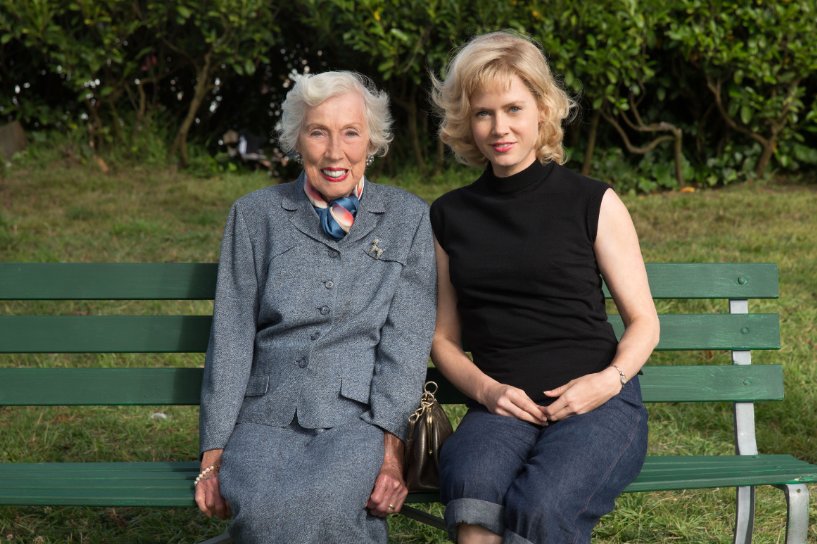January 26, 2015 • Events & Media

“The point of art is to elevate, not to pander,” John Canaday, the art critic (portrayed by Terence Stamp) in the movie Big Eyes tells us.
And yet, the pandering nature of Walter Keane, the villain in Tim Burton’s recent film, afforded him commercial and financial success, even as his pandering was build on the shakiest of foundations: Stolen credit. The film told beautifully the story of Margaret Keane, the quiet painter behind works recognized for the wistful and even exaggeratedly sad eyes. Her husband, Walter Keane, claimed credit for her work as his own for nearly a decade.
The story is complicated, as all great stories are. Various characters are sheltered from inherent truths, even while the audience is not. I covered two full pages with scribbled notes while I watched the film, not because I am a connoisseur or critic of film – I am not at all – but rather because so many aspects of the story resonated with me.
But the most resonate point of all was the film’s key message: Trust your judgment. Trust your gut. Open those big eyes.
The collective judgment of the audience (who of course had the benefit of historical facts) revealed the cracks in the foundation of Walter Keane’s story early, even as the rest of the characters only catch up later. His pandering, his charisma, his compelling story concealed those cracks for nearly a decade. But as we all know, nothing can mask the truth forever (even if forever takes a really, really long time, or 10 years as in the case with Margaret Keane).
Is it Pandering? Or Just Good Marketing?
The line Walter drew between pandering and innovative marketing is blurry. Were there nuggets of marketing brilliance baked within his schemes? He donated works to political figures to coincide with gatherings, visits, or events. Don’t we often make sacrificial offerings of our work in exchange for non-financial rewards (prominent placements, ongoing display, favorable publicity)?
He also offered printed reproductions of posters for sale at a low price point to monetize the enthusiasm of those who weren’t able to afford the original works. In so doing, he was sharing the work with the masses in an accessible way. He was also pandering. He cheapened the value of the actual work by implying anyone could own a replica, when in fact the replica lacked much of the original’s craft.
By engaging in various stunts for publicity (an exaggerated feud between Walter Keane and the owner of a restaurant that doubled as a gallery space was one such example dramatized in the film), he diverted the conversation away from the art… and thus away from the truth.
So even if there may have been nuggets of marketing brilliance embedded in the mirage, those cannot in any way forgive the mirage itself.
There is no excusing Walter’s actions in claiming (overtly or subtly) credit for work that was not his own. But I wonder if there is room to draw a bit of a lesson from his (self-inflicted) plight.
There is no substitute for authenticity in art. Without it, nothing else matters. But with it, perhaps there are effective ways of sharing authentic work in an authentic way (even if that authentic way includes marketing).
Aspirational Art… Aspirational Lives
If art is really aspirational – or if it should be as the critic reminds us gently – then perhaps we should all aspire to be more like the subject of Margaret Keane’s early work, her daughter Janie, whose iconic big eyes Margaret captured in acrylic. It was Janie whose eyes were both physically and metaphorically opened wide. It was the rest of the world whose vision was clouded. How wonderful if we all aimed to have our eyes as open as they are depicted in the film.
Margaret was – is – a mother to Janie, and during the film, we watch Janie grow up and it becomes clear that she was never fooled by the lies about the work’s origin. In fact, it is when she corroborates the lie to her daughter that we see Margaret most affected by the distortion of fact.
Now whether that moment was dramatized for purposes of the film or not, the way our children perceive us is powerful. Do they perceive us as creative? Are we servants in our own homes? Are we strong? Are we assertive? Are we enslaved?
Our children don’t have the benefit of knowing our younger selves. They only know us as parents. (And let’s be clear: sometimes that is a very good thing.) But it does indeed paint an incomplete picture, and it is our responsibility– particularly as women – to share accurate messages with our children.
To open their eyes, so to speak.
Shortchanging our accomplishments and watching our children’s perceptions of us change with those shortcomings can be incredibly painful. As she confesses her fib, her confessor asks Margaret if the lie will cause the child harm. She stumbles with the answer. In the literal sense, the answer is no, but as we all know, lies of omission or perception can indeed cause irreparable figurative harm, both to our own children and to an entire generation of women.
But as I continued to watch the film, I watched a strength evolution of sorts in Margaret Keane. I watched her grow in confidence, in ability, and in strength. No longer was she uncertain about her own abilities; but rather, she realized the power and strength she held.
Her eyes were opened as well.
In my favorite moment within the film, we glimpse the real Margaret Keane sitting on a park bench with – you guessed it – eyes open wide.
Reference: Big Eyes (2014) starring Amy Adams and Christoph Waltz, directed by Tim Burton. Visit Margaret Keane’s website for more.


